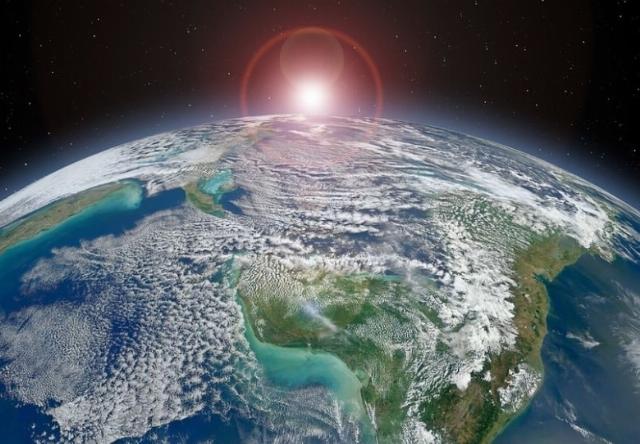Now climate change is ruining the Earth’s rotation!
I don’t know how we can offset the devastation. Studies show that the Earth’s rotation may change from 1 millisecond per century to 2.6 milliseconds per century by the year 2100 if we don’t reduce our emissions.
If my calculations are correct, that means that in 60,000 years, our use of oil, natural gas, and coal will change the rotation of the Earth by one second. How could we ever handle such a huge change? How can anyone tell if these calculations are remotely correct or verify what they say is the cause? The answer is, we can’t. It is all a massive scam to make the government bigger and to control our lives.
Everyone should remember that the politicians and bureaucrats who say they can control temperatures, sea levels, and storm activity forever say they aren’t responsible for the rapid inflation in food and oil prices.
I wonder why any of us oppose their policies and don’t trust what they tell us.
#ClimateCrisis is making days longer, study finds. #ClimateScience #GravitationalDrag #HumanCausedGlobalHeating
The climate crisis is causing the length of each day to get longer, analysis shows, as the mass melting of polar ice reshapes the planet.
The phenomenon is a striking demonstration of how humanity’s actions are transforming the Earth, scientists said, rivalling natural processes that have existed for billions of years.
“We can see our impact as humans on the whole Earth system, not just locally, like the rise in temperature, but really fundamentally, altering how it moves in space and rotates,” said Prof Benedikt Soja of ETH Zurich in Switzerland. “Due to our carbon emissions, we have done this in just 100 or 200 years. Whereas the governing processes previously had been going on for billions of years, and that is striking.”
Human timekeeping is based on atomic clocks, which are extremely precise. However, the exact time of a day – one rotation of the Earth – varies due to lunar tides, climate impacts and some other factors, such as the slow rebound of the Earth’s crust after the retreat of ice sheets formed in the last ice age.
The research, published in the Proceedings of the National Academy of Sciences of the USA, used observations and computer reconstructions to assess the impact of melting ice on the length of the day. The rate of slowing varied between 0.3 and 1.0 millisecond per century (ms/cy) between 1900 and 2000. But since 2000, as melting accelerated, the rate of change also accelerated to 1.3ms/cy.
“This present-day rate is likely higher than at any time in the past few thousand years,” the researchers said. “It is projected to remain approximately at a level of 1.0 ms/cy for the next few decades, even if greenhouse gas emissions are severely curbed.” If emissions are not cut, the slowing rate will increase to 2.6 ms/cy by 2100, overtaking lunar tides as the single biggest contributor to long-term variations in the length of days, they said.

Image via Picryl.





